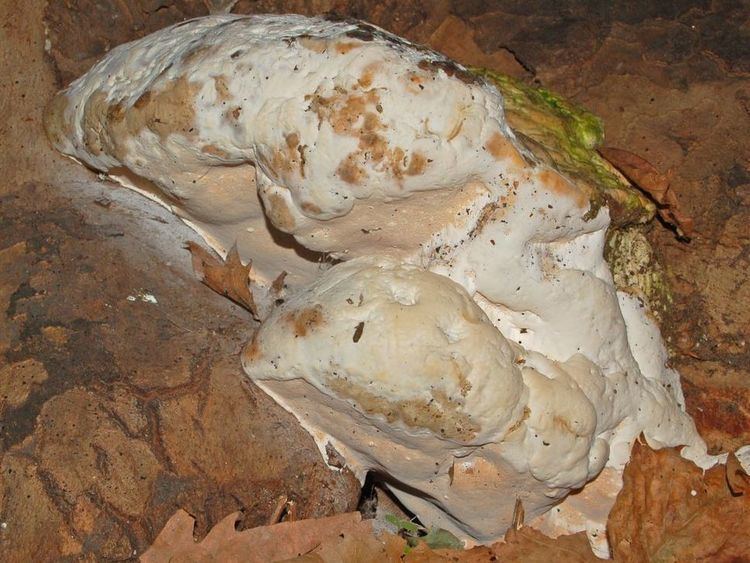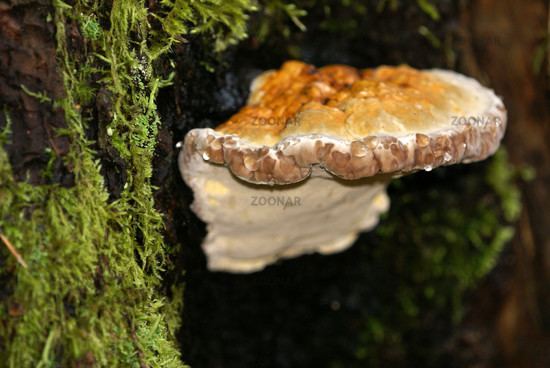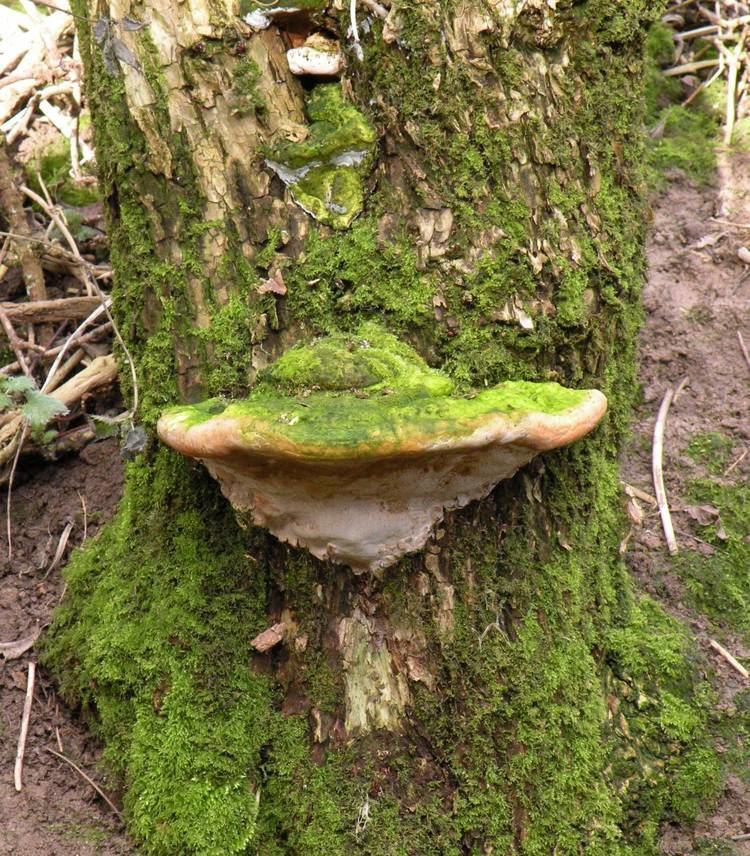Kingdom Fungi Phylum Basidiomycota Rank Species Subclass Agaricomycetidae | Scientific name Rigidoporus ulmarius Higher classification Rigidoporus | |
 | ||
Similar Rigidoporus, Basidiomycota, Calocera furcata, Enteridium lycoperdon, Inonotus tamaricis | ||
Rigidoporus ulmarius is a plant pathogen found mainly on broad-leaved trees. It used to be very common on elm.

The fruiting bodies are white, knobbly and relatively hard, requiring a fair amount of force to break. Older bodies may be covered with green algae, or partially covered with vegetation and leaves making them difficult to spot. They often encapsulate grass, twigs and other debris.
Tubes are 1–5 mm long in each layer, pinkish to orange when young, browning with age, each layer separated by a thin contrasting band of white flesh. Pores 5–8 per millimeter, red-orange fading to clay-pink or buff with age. Spores pale yellow, globose, 6–7.5 µm in diameter. Hyphal structure monomitic; generative hyphae lacking clamps. Habitat at the base of trunks of deciduous trees, usually elm. Season all year, perennial. Common. Not edible. Found in Europe.
A fruit body of R. ulmarius discovered in Kew Gardens of London in 2003 was, for a time, the largest known fungal fruit body ever discovered, measuring 150 by 133 centimetres (59 by 52 in) in diameter, and had a circumference of 425 centimetres (167 in). However, in 2011, a specimen of Phellinus ellipsoideus (formerly Fomitiporia ellipsoidea) significantly larger was discovered in China.

